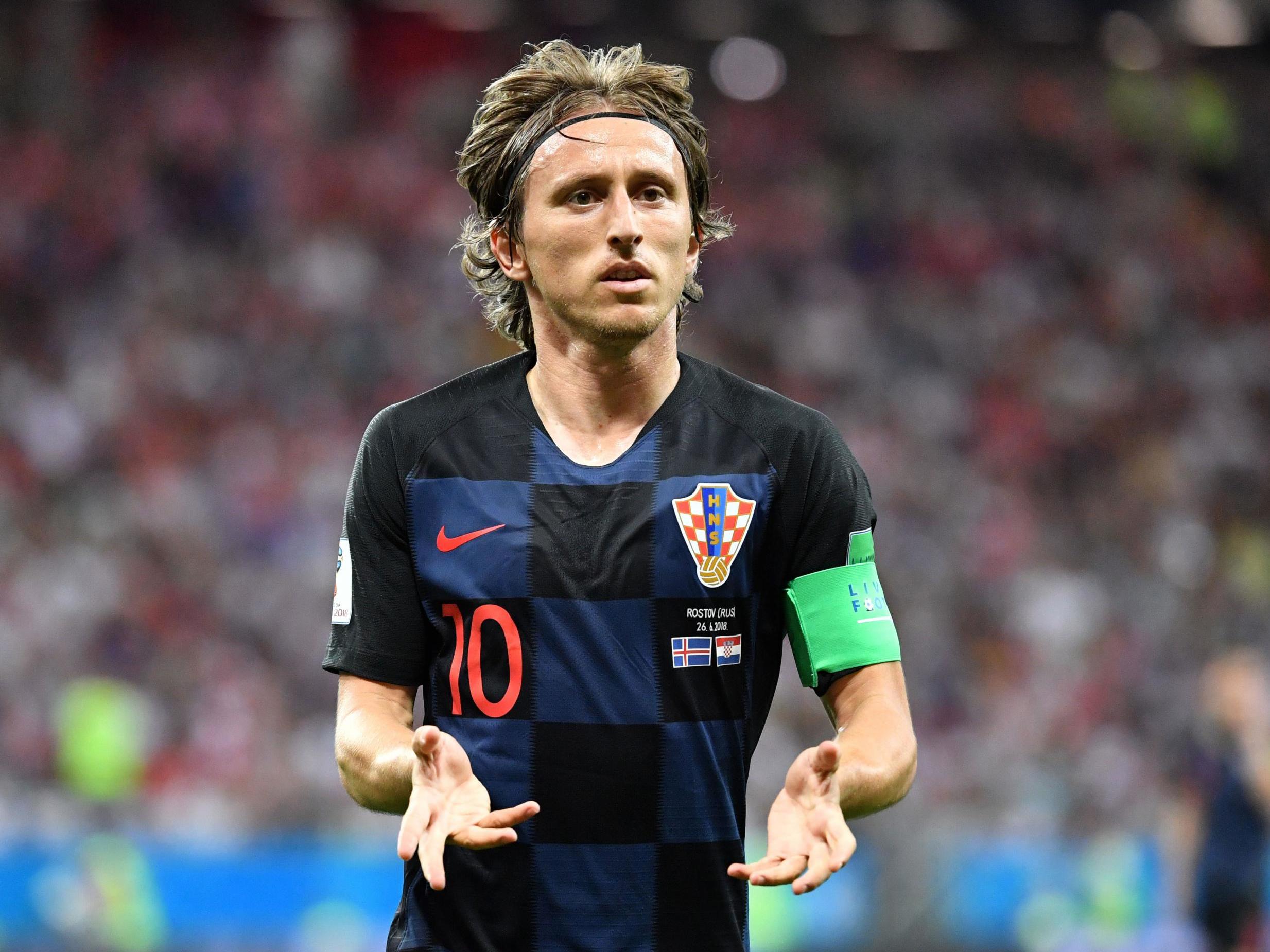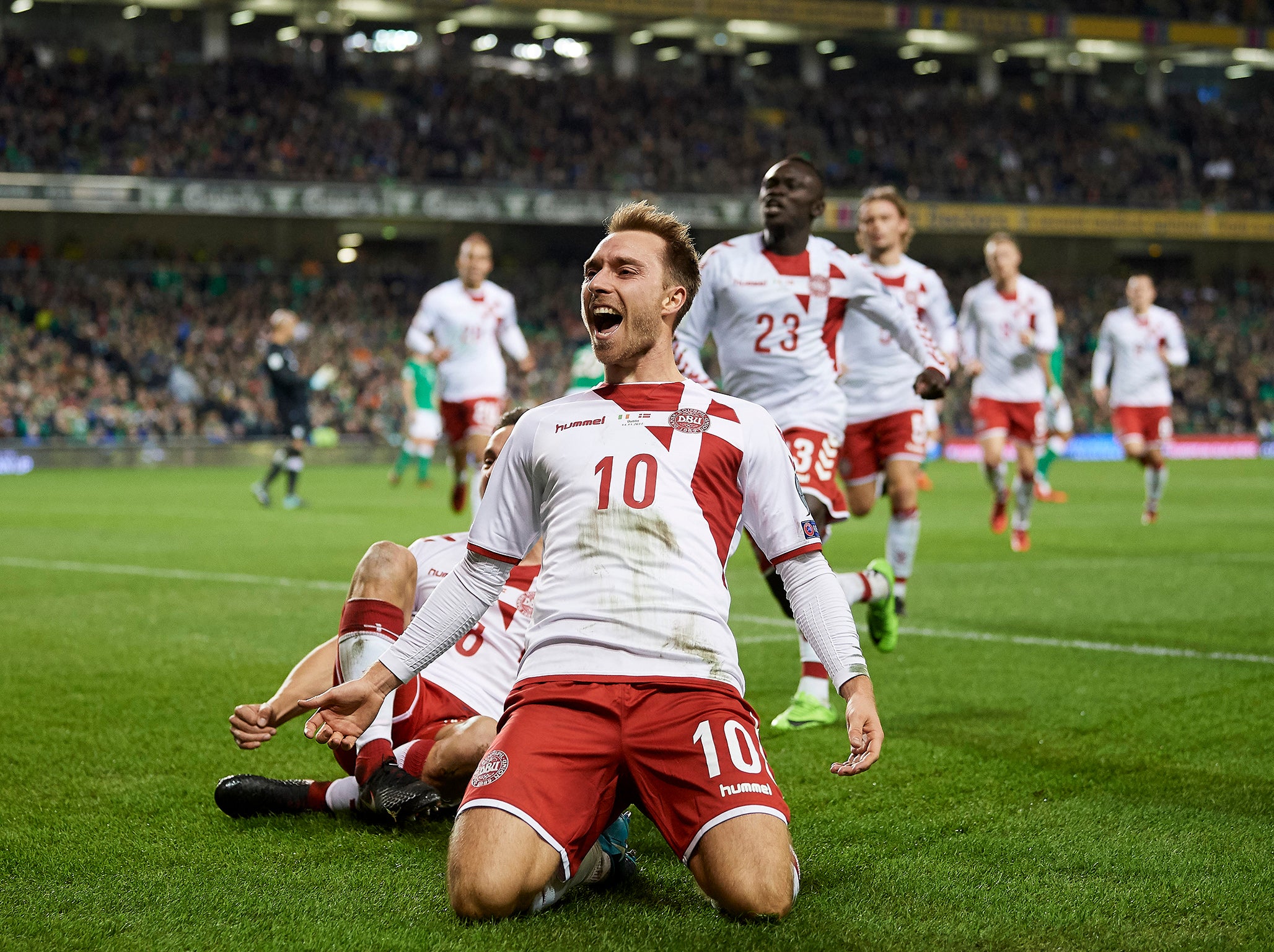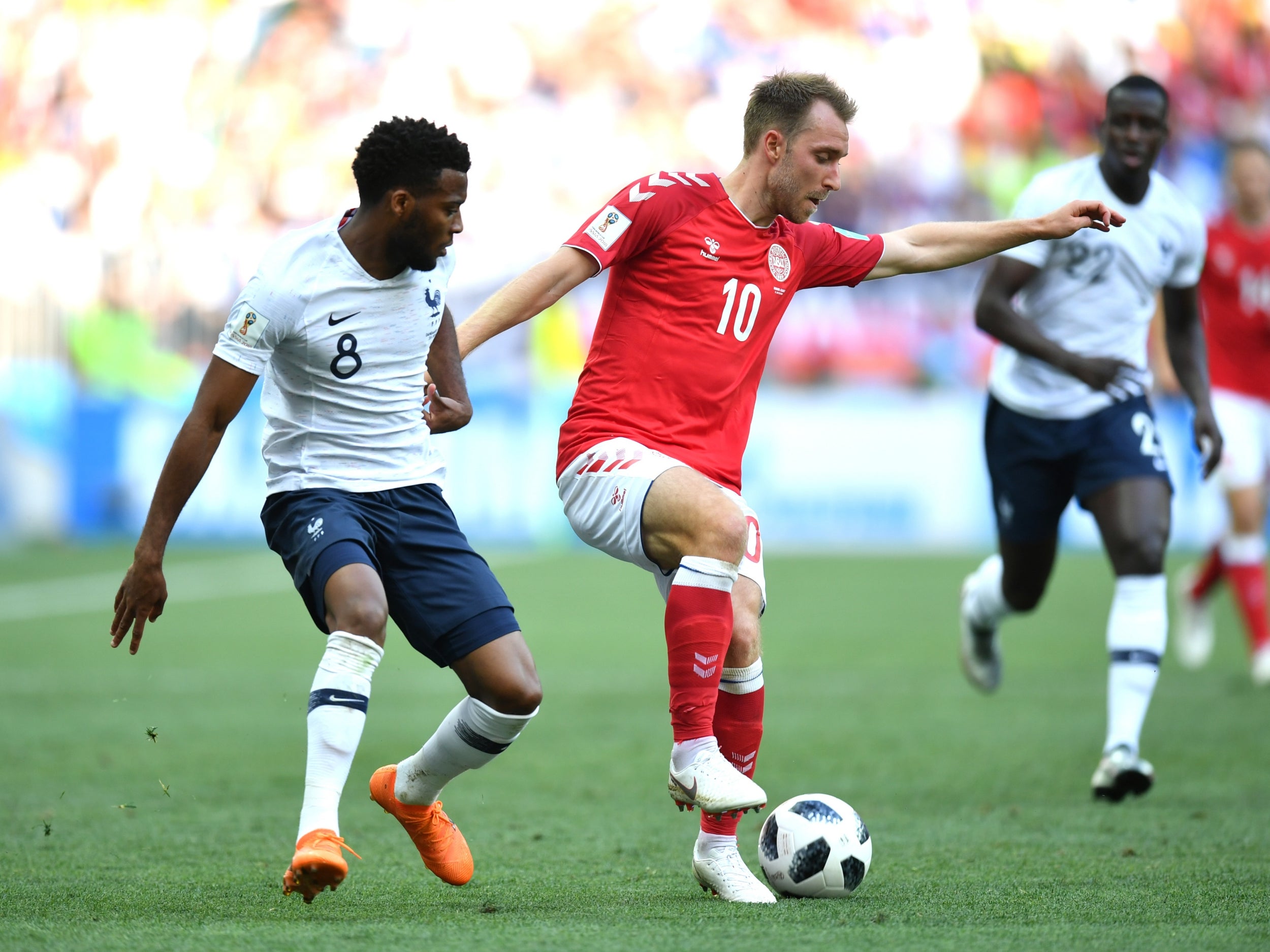Christian Eriksen vs Luka Modric: A battle that sees two little wizards duelling in the sun
Eriksen is following the same upward path Modric travelled before him. Now, today in Nizhny, they go head to head on the grandest stage of all

Your support helps us to tell the story
From reproductive rights to climate change to Big Tech, The Independent is on the ground when the story is developing. Whether it's investigating the financials of Elon Musk's pro-Trump PAC or producing our latest documentary, 'The A Word', which shines a light on the American women fighting for reproductive rights, we know how important it is to parse out the facts from the messaging.
At such a critical moment in US history, we need reporters on the ground. Your donation allows us to keep sending journalists to speak to both sides of the story.
The Independent is trusted by Americans across the entire political spectrum. And unlike many other quality news outlets, we choose not to lock Americans out of our reporting and analysis with paywalls. We believe quality journalism should be available to everyone, paid for by those who can afford it.
Your support makes all the difference.Amid all the clattering noise of a modern midfield battle, how does the littlest man on the pitch make himself heard? In a game that is becoming increasingly athletic, how do you overcome the fact of having a small body?
Those are the questions Luka Modric has been answering all his life. He has answered them from Dinamo Zagreb to Tottenham Hotspur to Real Madrid, answered them to four Champions League titles, and is now answering them again in the World Cup 2018.
Modric has been brilliant so far here in Russia, making the case once again that he is the greatest midfielder of his generation. He masterminded the defeat of Argentina in their second game, leaving the South American midfield so confused and dysfunctional that even Lionel Messi, who spent far too much time there, was left looking diminished to the point of being unrecognisable.
Then with Croatia in control, Modric delivered a decisive moment that Messi would have dreamed of, whipping a 30-yard shot into the bottom corner, putting Croatia 2-0 up.
Ten days on Modric and Croatia are back in Nizhny Novgorod for today’s last-16. In a World Cup this open, they look like serious contenders. Win this game and they will face Spain, who they beat in the group stage at Euro 2016. Emulating the Croatian team that reached the semi-finals in France ‘98 is within their grasp.
In their way stand Denmark, led by the closest thing Modric has to a young pretender, or an apprentice, in the European game. Christian Eriksen is Denmark’s own director of play, the man who coheres the whole team around himself. His presence turns ordinary players into a good team. His perfect pass sent through Yussuf Poulsen to win them the game against Peru, his brilliant finish gave them the lead against Australia.
Now 26 years old, Eriksen is still getting better, following the same upward path Modric travelled before him. Eriksen is learning what Modric has learned, how to apply his ethereal gifts in the frantic physicality of the modern game.
There was some surprise, all the way back in April 2008, when Tottenham paid Dinamo Zagreb £16.5m for the little 22-year-old Modric. Their Balkan scout Riccardo Pecini had found him and recommended him to Damien Comolli, who had been looking for technical, creative players to improve Spurs’ possession, especially in the opposition half. And Comolli was hammered by critics for the move. Why did Spurs want someone who looked so small, so weak?
But speak to those who played with Modric, and they will tell you about his calves. “Calves like absolute bricks”, as former Spurs team-mate Jamie O’Hara once told The Independent. They gave him that balance, which combined with his low centre of gravity and his cushion first-touch meant he was almost impossible to dispossess.

Modric arrived at Spurs with a football brain that worked faster than any of his team-mates. “He knew what he was going to do with the ball three passes before he even got it,” as O’Hara said. But that brain can be a defensive weapon as well as an attacking one. Because if you can intuit what your opponents plan to do – before they even know themselves – it makes it easier to steal the ball back.
It did not take Modric too much time to convince Harry Redknapp, and by extension the football world, that he could be trusted to play in a midfield two. That he could not just survive but dominate an English midfield battle despite his physical size. And once he did that, he took Spurs to the next level, to two fourth-placed finishes, and then took himself to Real Madrid.
There, Modric has achieved what so many players and managers have failed to do in the past. With his sense of space and his perfect passing, he has been the gel, the glue, the rug that knits the room together, turning brilliant individuals into a winning team. Not just that, but the most successful club side of the modern era, an implausible four Champions Leagues in five years.

Eriksen is not at that level, not yet. He moved to Tottenham at the age of 21, back in 2013, one year after Modric left. He had shone at Ajax as a youngster, impressing with those same gifts – balance, technique, vision as if the football pitch were his own personal chessboard – that won Spurs over to Modric.
Eriksen naturally plays slightly further forward than Modric, one phase later in play, the man providing the assist itself rather than the pass before it. For Tottenham he has played in the third band of four, whether in a 4-2-3-1 or a 3-4-2-1. He scores more goals than Modric and has proven himself a deadly free-kick taker for club and country. His 30-yarder against Juventus in the Champions League this year was a masterpiece.
So Eriksen’s test, when he came to England, was different. Not so much about looking after himself in midfield, but about putting pressure on the opposition even without the ball.
Eriksen has been blessed to work with Mauricio Pochettino for the past four years, one of the world’s leading coaches of pressing football. He has been through the mill and back, the draining pre-season ‘Gacon Tests’, the ferocious training-ground demands of Pochettino and Jesus Perez. But now he knows how to press, how to win the ball back, how to chase his full-back all the way back when he loses the ball, how to run further than anyone else on the pitch but still have the energy to think and execute when he does have the ball.
By doing that, Eriksen has mastered the physical demands of the modern game. Eriksen grew up idolising the previous generation of creative players, Michael and Brian Laudrup and Francesco Totti. They were players unshackled by defensive responsibility, able to catch their breath while their less talented team-mates chase the ball. Eriksen does not have that luxury.

This is the 2018 World Cup where the creators who thrive – look at Kevin De Bruyne of Belgium or David Silva of Spain – are the ones who work the hardest for the team. The time of Juan Roman Riquelme feels further away than ever. “It’s a new era, a new way of playing football compared to back then,” Eriksen told The Independent earlier this year. “Everyone is so sharp, everyone is so fit. Even the midfielders, the creative players, the number 10s, who have a bit of an easier role, that’s changed. You need to have a guy in there who can work for the team.”
Even now, that work off the ball might still be the decisive difference between them. Frank De Boer knows Eriksen better than almost anyone, having coached him at Ajax before he left for Spurs. And he thinks that for Eriksen to reach the level of Modric – the “most complete” midfielder of his generation – he still has to sharpen up without the ball. He may be as dangerous as Modric when he gets the ball, but he’s not quite as good at stealing it in the first place.
“What Eriksen misses from Modric’s quality is his defensive play,” De Boer told The Independent. “You see how many balls Modric recovers, and that’s the big difference from my point of view. I used to say to Eriksen about defending well, and he only wins two out of 10 of his defensive duels. Modric wins eight out of 10. That’s the huge difference, that’s what makes Modric the complete midfielder.”
So there is still some way to go for Eriksen as he scampers his way to the top of the game, where Modric has perched for years. But tonight in Nizhny Eriksen can do battle with the man he hopes to usurp, two little wizards duelling in the sun.
Join our commenting forum
Join thought-provoking conversations, follow other Independent readers and see their replies
Comments